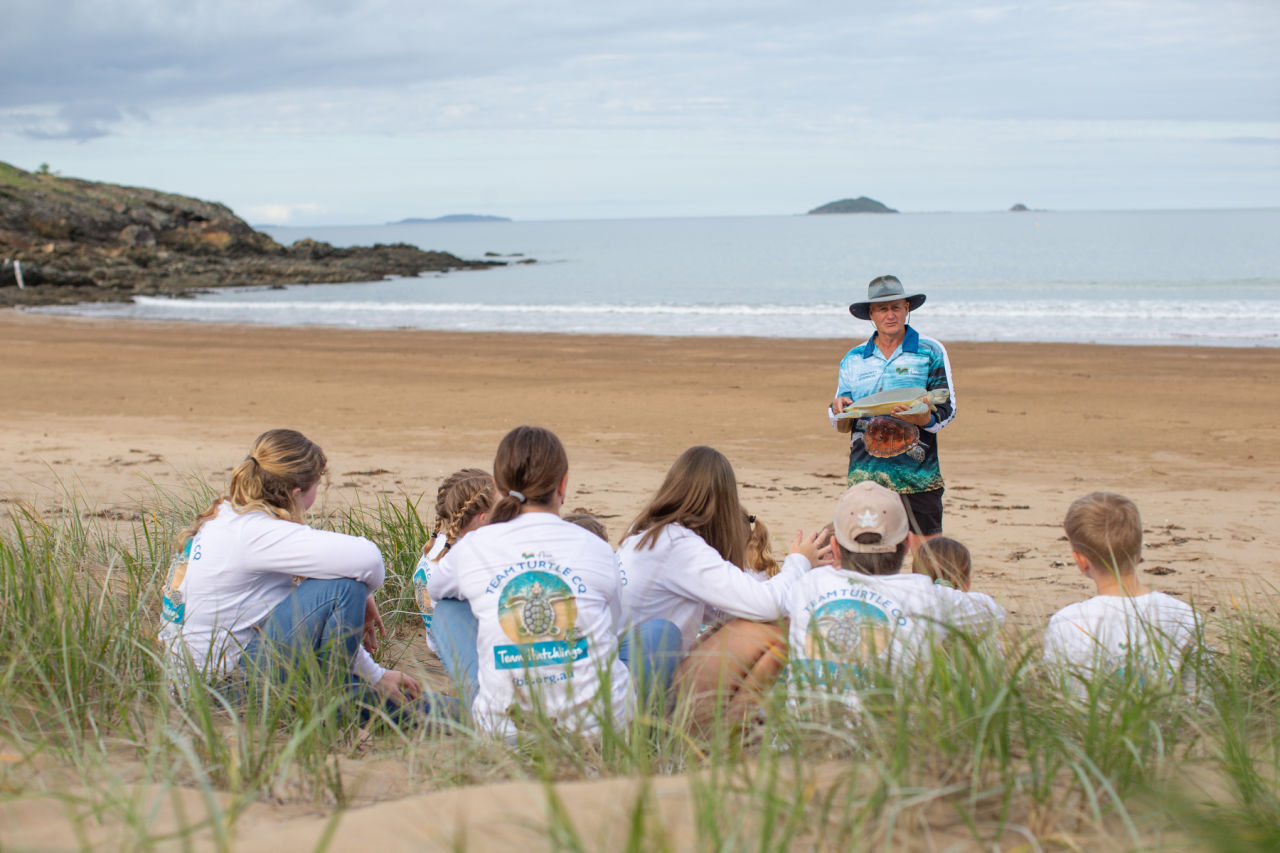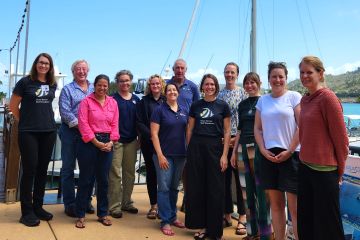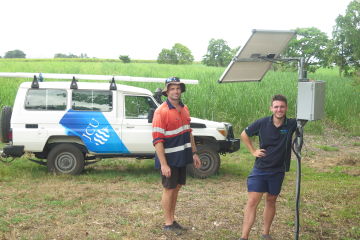Project News ·
Inspiring young leaders care for the Reef on the Capricorn Coast
Community and Traditional Owner groups on the Capricorn Coast are empowering youth to care for the Reef through the Community Action Plan (CAP) Program.

The Capricorn Coast is at the southern end of the Great Barrier Reef and is famous for its beautiful beaches and islands. It is home to thriving coastal communities, strong tourism and agriculture sectors, national parks, and internationally significant wetlands. The Keppel Bay Islands National Park is also home to the Woppaburra people.
To protect the significant values of this special place, Fitzroy Basin Association in collaboration with Capricornia Catchments led the development of the Capricorn Coast Community Action Plan in 2020. The collaborative planning process brought a diversity of people together including community groups, Traditional Owners, youth, businesses, and Reef managers to establish shared goals, identify critical projects, and develop a tangible plan for coastal, estuarine, and marine citizen science and on-ground community action.

BROLGA Junior Rangers event at Corio Bay. Credit: Laura Dunstan/GBRF
#What were the ingredients for success?
Youth leadership emerged as a strong theme in the planning and has been building momentum through multiple projects and initiatives.
1. Building confidence, identity and a sense of purpose
The program has provided a platform for young voices to be heard. It has helped instill confidence and recognise their potential, showing they can play an important role and make a tangible difference for the Reef.
The BROLGA (Believe. Respect. Openness. Learn. Grow. Achieve.) Program provides unique experiences for youth to learn about the value of identity, culture and language. Their school holiday program takes youth to culturally significant places to learn about the management of land and sea Country through the lens of both western and traditional sciences and approaches. Youth meet professionals such as Indigenous Rangers and University staff who inspire them to consider study, training or careers by highlighting the value of school attendance and TAFE/university pathways.
“I think youth working with our Elders to understand to ensure that cultural knowledge is passed down from generation to generation is very important. And I think learning that at a young age, we will see so many benefits with this area. I want to ensure that one day, my kids will then understand all this knowledge and dreaming and culture to protect our reefs and our environment.” – Jazmin Grant, BROLGA Junior Ranger

BROLGA Junior Rangers event at Mt Archer (Nurim). Credit: Laura Dunstan/GBRF
2. Making it fun
Projects are providing fun experiences for youth to get involved in Reef protection actions through engaging and locally-relevant activities.
The 2022 Sandy Krak Reef Festival strengthened cultural activities for the Capricorn Coast Communities by promoting a youth-led, 100% ecofriendly event intertwining art, music, dance, Indigenous culture and sustainability to raise awareness and encourage positive behaviour changes to look after the Reef. Darumbal and Woppaburra shared cultural knowledge about their TUMRAs (Traditional Use of Marine Resource Agreements), while fifteen ecofriendly artisan market stallholders and eight youth targeted workshops specifically focused on Reef protection and conservation. More than 450 participants including 200 youth attended the festival.
3. Creating career pathways
Programs are fostering genuine engagement with youth to build their capacity to be involved in decision making processes and to learn about future career opportunities. All CAP projects are linking youth with professionals in careers such as Indigenous Rangers, marine biologists and ecologists, which is inspiring them to pursue careers in these fields.

Ghost net weaving at the Sandy Krak Reef Festival. Credit: Daina Lanyon
4. Mentoring & forming strong social connections
CAP projects are providing transformational experiences connecting people not only with their local environment and the Reef, but also with each other through storytelling, mentoring, and forming strong social connections.
FBA’s Team Hatchlings project was launched to enable youth-led marine turtle conservation and stewardship. Enthusiastic students develop their leadership skills through planning and implementing education and awareness-raising activities to engage the wider community to care for turtles. Adults in an existing Team Turtle CQ program are role models for youth participants, and the older Team Hatchlings also mentor and guide younger kids to build confidence and skills. Together, the community is working collaboratively make a difference for sea turtle populations.
“Team Hatchlings is a way for me to continue to be involved in my community and our ecosystems whilst also forming a better future for the ecosystems we are trying to protect. I believe I can personally make a difference by being heavily involved in these groups and offering my input and do fundraising.” – Zahara Evans, Team Hatchlings

Team Hatchlings education event. Credit: FBA
5. Promoting wellbeing
In a world faced with challenges that can seem overwhelming, project leaders recognise that efforts must care for the environment and the people that care for it. Projects are providing safe spaces and hands on experiences to increase wellbeing and learn how many small actions can collectively make a big impact.
Through their Regenerative Land Use Education Project, High Valley Dawn farm has established a 0.6 hectare bush tucker orchard with 300 native plants. The project uses the growth of the orchard as an example of regenerative agriculture principles in practice and showcases how sustainable land management practices benefit the Reef. The farm operates on the permaculture ethics of Earth care, people care, and fair share and parents have reported their children developing a new attitude and appreciation for life as a result of engaging in the education programs.
“We give these children a transformational experience, when they come to the farm, plant the tree, walk them through the orchard, and sit in this sharing circle. Education is key and to do it in the way that gets to the heartstrings. We encourage wellness, the people care factor, so people feel good about themselves, so they can actually have the headspace to be able to think about doing stuff that’s good for the Reef and good for the environment.” – Ross O’ Reilly, Owner of High Valley Dawn Permaculture

Tour of High Valley Dawn Permaculture gardens. Credit: Laura Dunstan/GBRF
What’s next?
To build on the momentum and scale up opportunities for youth led Reef protection actions, the Foundation supported three CAP projects. These projects are investigating opportunities to work together and cross pollinate their programs and are continuing to grow more impactful opportunities for youth leadership.
Learn more about the achievements of each project in our case study.
To learn more about the Community Action Plan Program, visit: Community Action Plans - Great Barrier Reef Foundation


